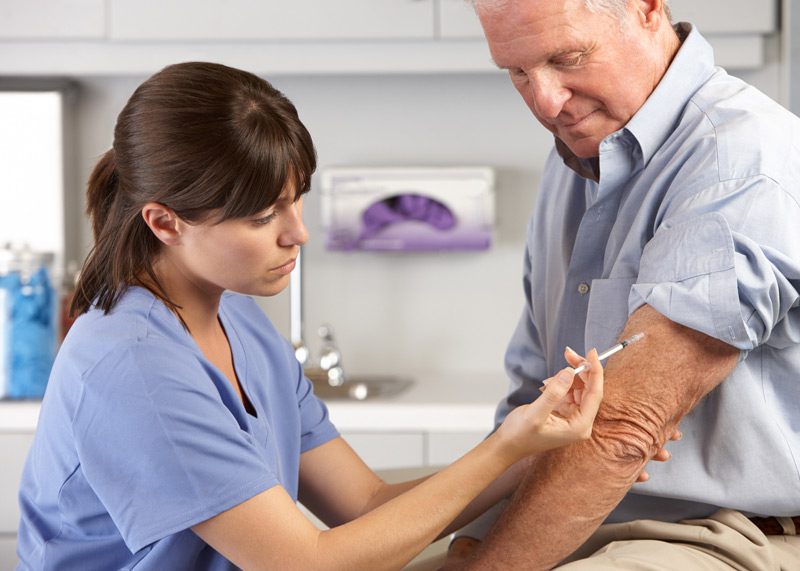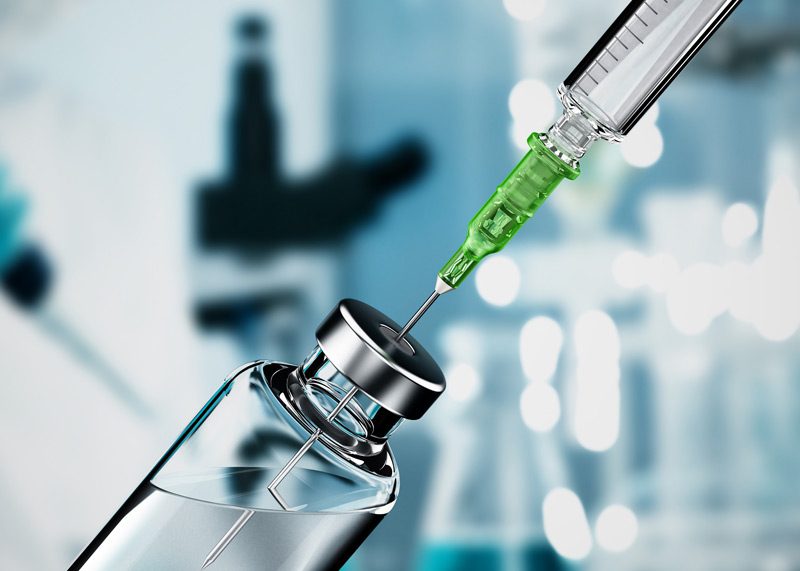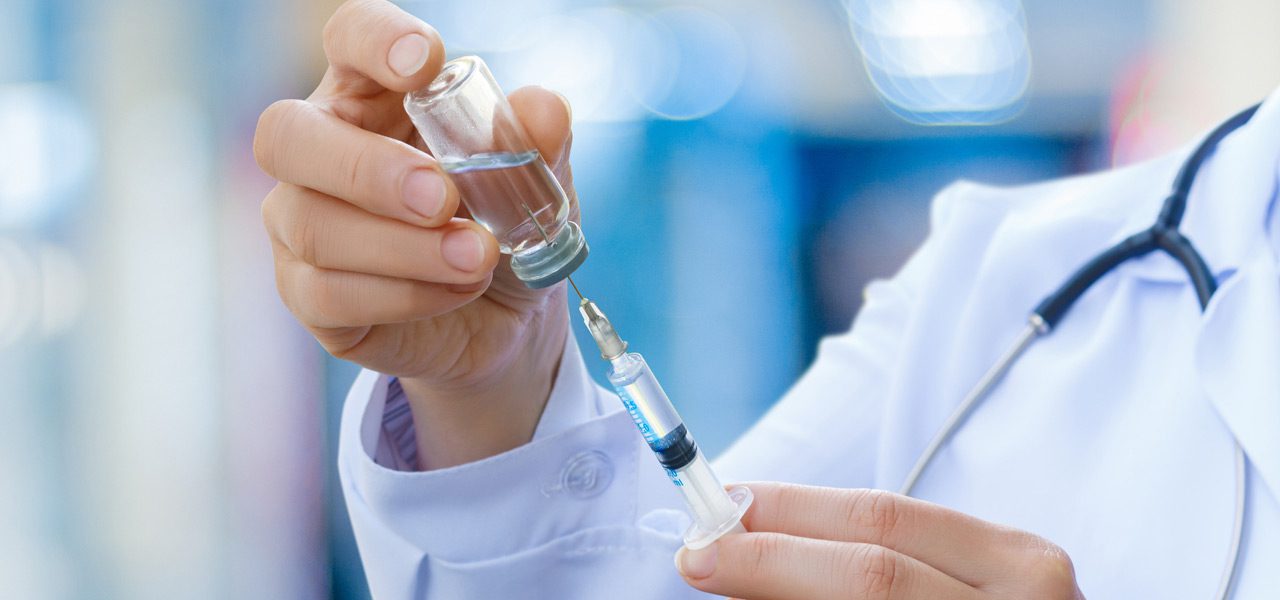

Injections are done to deliver fluids, liquid medications, or nutrients directly into a patient’s body. Vaccines and other types of medications can also be injected into veins, muscles, skins, or bones.
Subcutaneous Injections
These types of injections are done using a smaller needle to ensure the medication enters the fatty tissue and not the muscle.
Unlike muscle tissue, subcutaneous tissue has few blood vessels, allowing the body to absorb the medication slowly over an extended period of time.
Subcutaneous injections are less painful than other types of injections and less likely to cause an adverse reaction, such as an infection.
This type of injection may be done to administer:
- Insulin for diabetes
- Heparin, or blood thinners
- Vaccines, such as measles (MMR) and chickenpox (varicella)
- Palliative care pain medications such as fentanyl and morphine
- Other drugs such as Dupixent and fertility medications
Subcutaneous injections can be done in the:
- Outer side or back of the upper arm
- Front and outer side of the upper thigh
- Belly area

Intramuscular Injections
Intramuscular injections deliver medication directly into muscle tissue. Because the muscles have a rich blood supply, the body is able to quickly absorb the medication.
Intramuscular injections may be done to administer:
- Most vaccines
- Select antibiotics, such as penicillin and streptomycin
- Corticosteroids for inflammation or allergic reactions
- Hormones, such as testosterone and medroxyprogesterone
- Drugs to patients unable to take medication through other methods
Patients diagnosed with certain conditions, such as multiple sclerosis, may need to inject themselves at home with an intramuscular injection at the:
- Upper outer thigh area muscle
- Shoulder muscle and upper arm
- Hip
IV Injections
Intravenous (IV) injections deliver medications directly into a vein. This type of injection allows for rapid absorption and causes an immediate response.
IV medication can be administered as a single dose or as an infusion over the course of many hours.
IV injections may be done to administer:
- Fluid solutions and electrolytes to treat dehydration
- Local and general anesthesia to patients undergoing surgery or other medical procedure
- Pain medications to a patient in the emergency room or after surgery
- Nutrition to treat severe malnourishment
- Iron to treat a severe iron deficiency
- A steroid such as dexamethasone
- Contrast dye to a patient undergoing a special imaging test
Other reasons to provide IV injections include:
- Infusing monoclonal antibodies for COVID-19 treatment
- Giving chemotherapy to a cancer patient
IV injections may be done via the:
- Back of the hands
- Front and back of the lower arm
- Front elbow pit
Intraosseous Injections
Intraosseous injections target veins in bone marrow. This type of injection is the quickest way to deliver medications, fluids, and blood products to patients during a health emergency, such as:
- Severe injuries from an accident or fall
- Medication overdose
- Accidental poisoning
- Stroke
- Cardiac arrest
- Terminally ill patients who need pain medication
- Childbirth complications
- Electrocution
- Respiratory distress
- Prolonged or back-to-back seizures
- Insulin shock
- Administering medications to a patient in septic shock
Intraosseous injections may be done in the:
- Lower leg bone
- Upper arm bone
- Thigh bone

